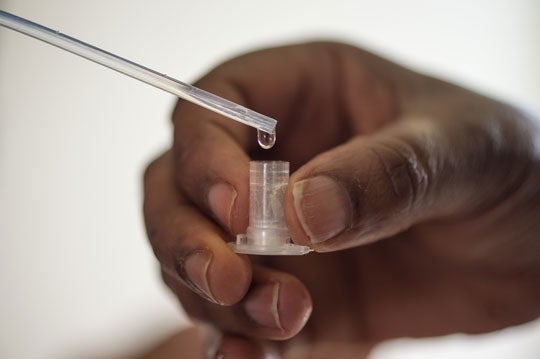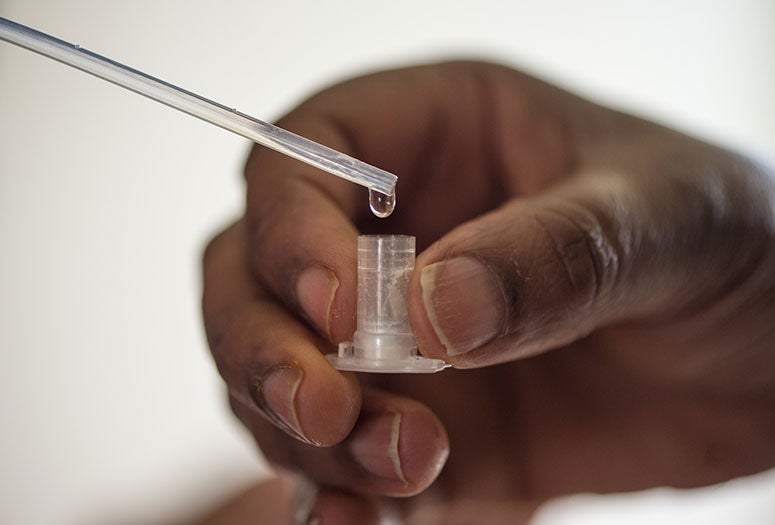Children exposed to lead have lower test scores than their peers, and the effect is exacerbated for Black children who live in racially segregated neighborhoods, according to an analysis by researchers from Rice University, the University of Notre Dame and Duke University.

The research is published this week in the Proceedings of the National Academy of Sciences.
“Tackling such urgent and important questions requires a significant collaborative effort, from building an appropriate database, to posing and refining the research questions and finally to applying the right statistical models,” said study co-author Daniel Kowal, Rice’s Dobelman Family Assistant Professor of Statistics. “This analysis really benefited from several advanced statistical techniques and from an emphasis on interpretable models.”
The researchers linked birth data, blood lead levels and fourth grade end-of-grade test scores for more than 25,000 North Carolina children to examine how childhood lead exposure and neighborhood racial segregation affected children’s educational outcomes.

Study corresponding author Mercedes Bravo, an assistant research professor at the Global Health Institute at Duke, said, “Our study concluded that it’s not just about where lead exposure is highest. That’s just one piece of the puzzle. Black children are more likely to be exposed to lead and are also more likely to live in racially segregated, predominantly Black neighborhoods. When these two exposures co-occur, children had worse-than-expected scores.”
The analysis showed lead exposure was associated with lower test scores among all children. Non-Hispanic Black children were more likely to be exposed to lead and more likely to live in racially segregated neighborhoods, which amplified the negative effects of lead exposure.
“Identifying these combinations of environmental, social, and economic exposures, and interactions between them can inform the targeting and design of interventions in vulnerable communities,” Bravo said.

Study co-authors included Katherine Ensor, Rice’s Noah G. Harding Professor of Statistics, and Dominique Zephyr and Marie Lynn Miranda, both from Notre Dame’s Children’s Environmental Health Initiative (CEHI).
“In the midst of our country’s racial reckoning, we must work harder to understand and ultimately act on the deep effects that environmental justice and structural racism have on our country and our communities,” said Miranda, director of CEHI and a professor of applied and computational mathematics and statistics at Notre Dame. “This paper tackles both issues head on by showing that a clear issue of environmental justice (childhood lead exposure) is further compounded by the structural racism that Black families in particular face in the United States, as demonstrated through racial residential segregation.”
There is no safe level of lead exposure. According to the Centers for Disease Control and Prevention (CDC), U.S. children are primarily exposed to lead in their own homes. Homes built before 1978 are more likely to have lead-based paint, lead-contaminated dust and pipes and plumbing fixtures that contain lead. Racially segregated neighborhoods and low-income neighborhoods tend to have higher proportions of homes built before 1978.
Previous CEHI research linking lead exposure and performance on standardized tests contributed to the CDC’s decision to lower the reference level for childhood blood-lead levels, which has helped protect hundreds of thousands of U.S. children.
Testing homes for lead-based paint and plumbing can prevent childhood lead poisoning. Information about lead testing and preventing lead poisoning is available from the CDC at: https://www.cdc.gov/nceh/lead/faqs/lead-faqs.htm
The research was supported by the National Institutes of Health (R00MD011304, R01ES028819).
- Peer-reviewed paper
-
“Racial residential segregation shapes the relationship between early childhood lead exposure and 4th grade standardized test scores” | Proceedings of the National Academy of Sciences
Mercedes A. Bravo, Dominique Zephyr, Daniel Kowal, Katherine Ensor, Marie Lynn Miranda.
- About Rice
-
Located on a 300-acre forested campus in Houston, Rice University is consistently ranked among the nation’s top 20 universities by U.S. News & World Report. Rice has highly respected schools of Architecture, Business, Continuing Studies, Engineering, Humanities, Music, Natural Sciences and Social Sciences and is home to the Baker Institute for Public Policy. With 4,240 undergraduates and 3,972 graduate students, Rice’s undergraduate student-to-faculty ratio is just under 6-to-1. Its residential college system builds close-knit communities and lifelong friendships, just one reason why Rice is ranked No. 1 for lots of race/class interaction and No. 1 for quality of life by the Princeton Review. Rice is also rated as a best value among private universities by Kiplinger’s Personal Finance.

